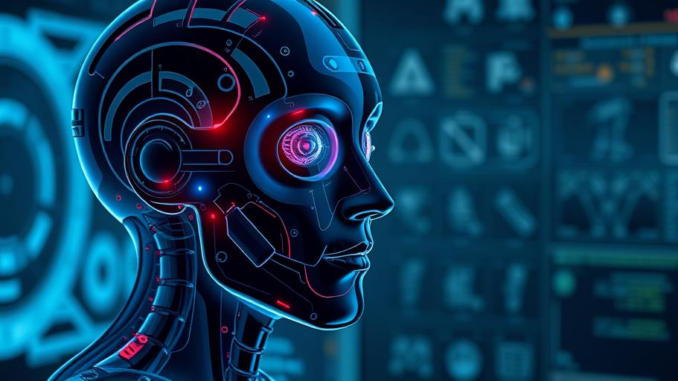
Summary
GE HealthCare and NVIDIA are partnering to develop autonomous imaging technology for X-ray and ultrasound systems. This collaboration aims to alleviate the burden on healthcare professionals, improve patient care, and address staffing shortages. The technology utilizes AI and machine learning to automate tasks, allowing healthcare workers to focus on more complex cases and direct patient interaction.
Healthcare data growth can be overwhelming scale effortlessly with TrueNAS by Esdebe.
** Main Story**
Okay, let’s talk about this new GE HealthCare and NVIDIA partnership. It’s all about autonomous imaging, starting with X-ray and ultrasound. Think about it: NVIDIA’s AI smarts combined with GE HealthCare’s imaging experience? It could be pretty transformative, potentially taking on some of the biggest issues in healthcare. I mean, they’ve been working together for 16 years, so you know they’re serious about pushing things forward.
AI to the Rescue: Automating Imaging Workflows
NVIDIA’s Isaac for Healthcare platform is at the heart of this. It’s got pre-trained models and simulations ready to go, which GE HealthCare plans to use to really put these autonomous imaging systems through their paces in a virtual world. It’s all about training, testing, and making sure everything’s safe before they hit the clinic. The promise? Automating the more routine parts of the process. Patient positioning, image scanning, quality control, the whole nine yards. This frees up medical staff, allowing them to spend more time on patient care, complex cases or even taking a well deserved break. It’s not just about making things faster, it’s about improving outcomes.
Tackling Healthcare’s Biggest Challenges
And you know what? This is more than just cool tech. We’re talking about real solutions to real problems. Like the shortage of radiology staff. It’s a growing problem, leading to burnt-out staff and potential diagnostic delays. However, imagine if autonomous imaging could step in to automate some of those tasks, optimising staff resources. The demand for imaging services is only going up, too, especially with an aging population. So, being able to handle more patients without sacrificing quality? That’s huge. Furthermore, it could expand access to imaging services in underserved areas, where access to specialists is often limited.
Focusing on X-Ray and Ultrasound
Initially, they’re focusing on X-ray and ultrasound, these are two of the most common diagnostic imaging tools out there. Billions of exams are performed every year, world wide. Therefore, automating these systems has the potential to improve workflows, reduce costs, and enhance patient care, which is huge.
For X-ray systems, GE HealthCare will use NVIDIA’s Isaac for Healthcare and Jetson platforms. Synthetic data will be used to simulate different scenarios and automate repetitive tasks. This way, technologists can focus more on direct patient interaction and those more complex cases. Then there’s ultrasound. Let’s not forget how physically demanding that role can be on the body! You may not realize this, but, did you know that there is a high rate of work-related injuries among sonographers? So, if AI can streamline workflows, reduce repetitive movements, and provide advanced image understanding, that could really make a difference.
The Future is Here (Almost)
So, what does this all mean? This partnership between GE HealthCare and NVIDIA could be a game changer for autonomous imaging. Combining their strengths, they’re showing us what’s possible in medical imaging. A future where AI plays a key role in improving patient care, and making healthcare systems more efficient. I mean, think about it, it’s already March 21, 2025! It’s exciting stuff, but we all know how quickly things can change in tech. So, while this is where things stand today, who knows what tomorrow will bring?


Autonomous imaging, eh? Soon, the machines will be diagnosing us better than we can diagnose our own dodgy internet connection. I’m ready for my ultrasound to be performed by a sassy robot arm that also offers life advice. “More kale, less complaining, next patient!”
Haha, I love the sassy robot arm concept! The life advice feature is a must-have. Seriously though, streamlining processes would free up healthcare professionals to provide even more personalized care and maybe even recommend that kale.
Editor: MedTechNews.Uk
Thank you to our Sponsor Esdebe
The potential for AI to alleviate physical strain on sonographers is significant. Reducing work-related injuries through streamlined workflows and advanced image understanding could improve the well-being of healthcare professionals and contribute to better patient outcomes.
Absolutely! The reduction in physical strain on sonographers is a key benefit. Streamlining those workflows not only helps prevent injuries but also allows them to focus their expertise on more complex cases and provide better patient care. A healthier, happier workforce leads to better outcomes for everyone!
Editor: MedTechNews.Uk
Thank you to our Sponsor Esdebe
AI optimizing patient positioning? Finally, someone’s addressing the real issue – getting that perfect selfie angle during my X-ray. I look forward to a future where machines compliment my skeletal structure.